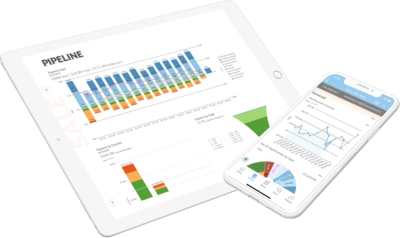Why bother with a BI tool?
Business intelligence is one of the fastest growing sectors of the business software sector. Many businesses in all sorts of different sectors are investing in business intelligence software because they think that the value that a business intelligence tool will provide will make the investment worthwhile.
Many businesses are still on the fence, though. The utility of business intelligence software isn’t always extremely clear to people who’ve never interacted with a BI system or heard the marketing surrounding the industry.
Business intelligence tools provide a lot of value that’s invisible to outside observers. Unlike a tool like a CRM, which very obviously provides a lot of value to businesses that work closely with clients or customers, the advantages that a business intelligence tool provides are less clear.
Even a business that does invest in a business intelligence tool might not end up seeing any benefit for weeks or even months after they implement it.
Business intelligence tools specialize in finding and highlighting small, incremental changes that a business can make in their operations. They only rarely provide the sort of revolutionary insight that something like an ERP tool might.

Often, it’s hard to sum up the sort of value that a business intelligence tool can provide in a short slogan, like someone can for other business software. A project management tool pretty clearly provides value in managing projects, and a payroll tool helps with payroll. What does a BI tool help with? It’s harder to explain.
For all these reasons, many businesses are reluctant to invest in a business intelligence tool without first seeing what the real value of a tool of that kind might be. They don’t want to throw money, often substantial amounts of money, at a tool that’s not going to be valuable to them.
Businesses that are looking to invest in a BI tool have two key questions that they want answered: ‘What sort of value does a BI tool provide?‘ and ‘How can I tell if I need a BI tool?’ These questions determine whether or not a business invests in a tool and what sort of tool they’ll invest in.
What sort of value does a BI tool provide?
Businesses wouldn’t bother investing in a business intelligence tool unless it provided some sort of value to them. But the value that a business intelligence implementation provides is less clear than the value of other software solutions, especially simpler ones like project management or time tracking.
Even at their most basic level, business intelligence tools provide benefits to the businesses that use them. Businesses will start to get some use out of their tool even before they start using it to perform data analysis or construct data visualizations.
The most basic way that business intelligence tools provide value is as data connectors. BI tools help businesses connect all of their business data and store it in one place so that it can be easily compared, combined, and analyzed.
For example, a retail business might have a time tracking and payroll tool, an accounting tool, some sort of inventory tool, and a point of sale system that tracks transactions. There are different data insights that these tools can provide, but all of those insights are locked into their own tools. Users can’t easily access them to drive insight.
After a business invests in a business intelligence tool, they can combine all these data sources and store all of their data in the same place. Not only does this mean a user only needs to access one tool to access all of their business data, it means that they can compare metrics across different systems.
For example, a business might want to compare data from their inventory management tool with sales data from their PoS system. This way, they can make sure they’re buying inventory they can actually sell, instead of filling their shelves with things no one wants to buy.

Without a business intelligence tool, there’d be no way to compare these two data sets together correctly. A sales manager might have to use pen and paper or other antiquated methods to use the data from one tool to drive decisions in another. With a modern BI tool, though, a decision maker can compare the two data streams right on the same webpage.
That’s just a simple use case for this type of work, though. With a business intelligence tool, data sets from different tools can be combined, analyzed together, and worked with. This way, businesses can more easily draw insight out of the data that they already have.
This data can also be updated and tracked in real-time, so that decision makers can get up-to-the-minute updates on their data. This is especially useful in industries like manufacturing, where managers want to know the status of their assembly line in real time.
Businesses can track key metrics that determine business health so that they can have deep insight into the success of their business operations. These metrics, called KPIs, allow far greater insight into general business performance than would be possible with just standalone business tools.
At its core, a BI tool helps businesses manage their data in a more effective way. For businesses that don’t already have some sort of data management tool, they represent a huge step forward in data access, allowing users to finally find insight in their data.
How can I tell if I need a BI tool?
Often, smaller businesses don’t realize when they’ve reached the point where a BI tool would be useful to them. For these businesses, data isn’t a priority, and they don’t have any sort of idea how it can be used to make decisions or drive insight.
Generally, this is because they’re managing their data in very ad-hoc, decentralized ways. Instead of managing their data through a BI tool, they may be managing it through reports generated by their business software or by collating relevant data points in an Excel document.
In this sort of setup, data is external to business operations. Decision makers rarely use data to make their decisions; if they are, they’re using static reports and basic Excel functions. Businesses don’t use data to make decisions; they make their decisions and then maybe collect some data that goes unread in a spreadsheet somewhere.
This kind of data use is very common across smaller companies or companies that haven’t decided to invest in some sort of data management and analysis tool. It’s extremely harmful because it ignores the power of data analytics in favor of making gut-level, instinctual decisions that aren’t supported statistically.
Managers and executives like to think that their particular business expertise is the only important element of their jobs, but business acumen is only a small part of the modern manager’s business arsenal. Modern business management relies much more on data analysis, which only becomes possible with a BI tool.
In general, businesses can tell that they’re ready to invest in a BI tool if they’ve been having these problems:
Employees don’t know where to access the data they need for success.
In badly managed, decentralized data networks, the data that someone needs to perform an analysis or power a visualization might be in dozens of different places.
Relevant, important data might be in a static report generated by one of many different pieces of business software, or it might be stored in an Excel spreadsheet that’s saved to an on-premise computer, or it might be in any number of different places. The key is that it’s very hard to find data when it’s needed.
BI tools solve this problem by storing every relevant piece of business data in one central location. Finding data in this central location is formalized, so that employees don’t have to learn a dozen different storage schemas to find their data. With a BI tool, finding important data is easier.

Business leaders can’t use data effectively.
This is a more broad criteria, but it describes a business culture where employees are collecting data but managers and executives aren’t, for whatever reason, using that data to drive their decisions.
Most commonly, this is due to technological problems. Businesses can get away with using Excel for a long time, but there comes a point where spreadsheets become too big and unwieldy to use as an everyday tool. The sorts of analysis that can be performed with Excel are rather limited, as well.
These businesses need a more powerful tool to perform more powerful data analysis. With a BI tool, these businesses can access the sort of data analysis that they really want to do.
At other businesses, the reluctance to use data to drive decisions might be more cultural. In these cases, introducing a BI tool can make things less complicated for business leaders and result in a happier, more productive data culture.
Data is stale by the time it gets to decision makers.
Many businesses that don’t have a BI tool and don’t put much effort into data analysis use static reports to stay informed about their key metrics. All too often, the data within these reports is outdated by the time it gets to someone who can use it.
This happens for a lot of different reasons; employees might not have enough time to generate reports as often as they’re needed, or the method for generating reports is too complicated to do that often, or communication channels are so slow that reports are generated on time but are stale by the time they get to decision makers.
Regardless of the reason, stale data can create all sorts of problems for businesses trying to use it to drive insight. Stale data might hide the severity of a situation, make a mountain out of a molehill, or prevent a business from seeing danger entirely. Businesses using stale data to make their decisions will make poor, harmful ones.
BI tools massively speed up data so that users and decision makers can access their data in real time, or as close to real time as it’s possible to get. This helps to defeat stale data and lets decision makers use fresh, valuable, vital data to solve their business problems.
BI tools can also help unclog communication pipelines, so that decision makers actually get their data when they need it. Instead of trying to funnel data from low-level data managers to executives, business leaders can get their data delivered straight to them through an email or dashboard.
These are just a few of the signs that a business would benefit from a BI tool and should think about investing in one. Once a business’s data strategy starts becoming too much to handle in an ad-hoc way, they need to start thinking about investing in a formal data management tool.
Why bother with a BI tool?
Why should businesses bother with a BI tool? BI tools help businesses to manage their data so that they can use that data to drive insight and make decisions. They’re an essential tool for any modern, growth-focused business that wants to succeed in the field.
Check out some related resources:

Guide to ETL Data Modeling: Process, Techniques, and Best Practices

The 11 Best Big Data Analytics Tools in 2025






